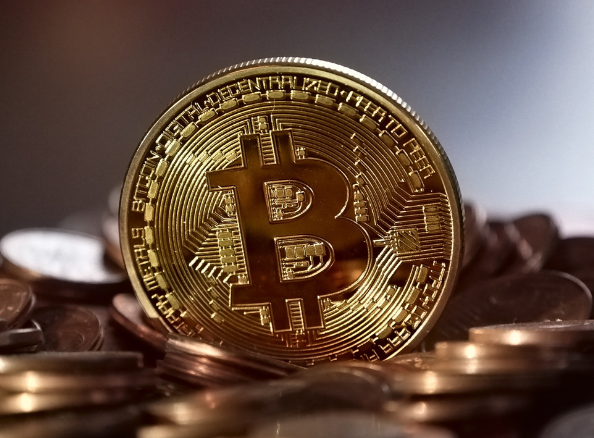Bitcoin, the pioneer of cryptocurrencies, has consistently garnered attention from institutional investors worldwide. Its inception in 2009 marked the beginning of a revolutionary approach to finance, introducing decentralized digital currencies that operate outside the traditional banking system. Over the years, Bitcoin has evolved from an obscure technology to a global phenomenon, captivating the interest of investors, financial institutions, and regulators alike. Its emergence as a potential asset class in institutional portfolios stems from its distinctive attributes, including decentralization, finite supply, and perceived store of value. Its adoption is reshaping the global financial landscape, with profound implications for various aspects of the economy, finance, and society at large. As Bitcoin continues to gain acceptance and recognition as a legitimate asset class and medium of exchange, its long-term implications are becoming increasingly significant. Long-Term Implications of Bitcoin Adoption Financial Inclusion Bitcoin has the potential to promote financial inclusion by providing access to financial services and resources to individuals who are underserved or excluded by traditional banking systems. With Bitcoin, people in regions with limited access to banking infrastructure can participate in global financial transactions, store value, and access capital without relying on intermediaries or facing barriers such as high fees, minimum balance requirements, and documentation constraints. Moreover, Bitcoin’s borderless and censorship-resistant nature enables cross-border remittances and peer-to-peer transactions, facilitating economic empowerment and wealth distribution on a global scale. Monetary Sovereignty Bitcoin’s decentralized and finite supply make it an attractive alternative to fiat currencies controlled by central banks and governments. By holding Bitcoin, individuals and institutions can assert greater monetary sovereignty and hedge against the risks of currency debasement, inflation, and government interference. Moreover, Bitcoin’s deflationary monetary policy, which mandates a predetermined issuance schedule and a maximum supply cap, ensures scarcity and long-term value preservation, making it a compelling store of value and unit of account over time. Economic Empowerment Bitcoin’s permissionless and open-source nature empowers individuals to take control of their financial destinies, fostering economic autonomy, self-reliance, and entrepreneurship. Through Bitcoin, people can transact, save, invest, and engage in economic activities without relying on traditional financial intermediaries or facing arbitrary restrictions and limitations. Additionally, Bitcoin’s programmable capabilities enable the development of decentralized applications, smart contracts, and innovative financial services, opening up new opportunities for innovation, collaboration, and value creation across various sectors of the economy. Institutional Adoption The growing adoption of Bitcoin by institutional investors, corporations, and financial institutions signals a paradigm shift in investment strategies and asset allocation practices. As Bitcoin matures as an asset class and gains broader acceptance, institutional investors are increasingly recognizing its potential for portfolio diversification, risk management, and long-term value appreciation. Moreover, the development of regulated investment products, such as Bitcoin futures contracts, exchange-traded funds (ETFs), and institutional-grade custody solutions, is expanding access to Bitcoin markets and enhancing market liquidity, stability, and transparency. Technological Innovation Bitcoin’s underlying technology, blockchain, has transformative implications beyond finance, offering decentralized solutions to various challenges in industries such as supply chain management, healthcare, voting systems, and identity verification. By leveraging blockchain technology, businesses and governments can enhance transparency, security, and efficiency in their operations, reduce costs, mitigate risks, and unlock new innovation and value creation opportunities. Moreover, Bitcoin’s decentralized architecture and open-source ethos foster collaboration, knowledge sharing, and community-driven development, driving continuous innovation and evolution in the digital asset ecosystem. Potential Benefits of Bitcoin in Institutional Portfolios Portfolio Diversification Bitcoin offers institutional investors a means of diversifying their portfolios beyond traditional asset classes such as stocks, bonds, and real estate. Due to its low correlation with traditional financial assets, Bitcoin can provide a hedge against systemic risks and market downturns, potentially improving overall portfolio performance and resilience. By incorporating Bitcoin into their portfolios, institutions can achieve greater diversification benefits and reduce portfolio volatility, thereby enhancing risk-adjusted returns over the long term. Uncorrelated Returns Bitcoin’s unique market dynamics and fundamental attributes make it an attractive investment option for institutions seeking uncorrelated returns. Unlike traditional assets, whose prices are influenced by macroeconomic factors and market sentiment, Bitcoin’s decentralized nature and limited supply dictate its price dynamics independently of other asset classes. Consequently, Bitcoin’s non-correlated returns can help institutional investors achieve more efficient portfolio diversification and reduce the risk of losses during periods of market stress or economic downturns. Inflation Hedge Bitcoin’s deflationary monetary policy and limited supply cap make it an effective hedge against inflation and currency debasement. As central banks around the world engage in expansionary monetary policies, printing fiat currencies at unprecedented rates, concerns about inflation and purchasing power erosion have heightened among institutional investors. By allocating capital to Bitcoin, institutions can protect their wealth from the negative effects of inflation and preserve long-term purchasing power, thereby safeguarding their portfolios against the risks of fiat currency depreciation. Store of Value Bitcoin’s digital scarcity and decentralized architecture make it an attractive store of value in an increasingly digital and interconnected world. With a maximum supply of 21 million coins, Bitcoin is designed to be scarce and resistant to inflationary pressures, similar to precious metals like gold. Institutional investors view Bitcoin as a reliable store of value that can serve as a long-term asset allocation strategy to preserve capital and hedge against macroeconomic uncertainties. Moreover, Bitcoin’s divisibility, portability, and censorship resistance make it a convenient and secure store of value for institutions seeking to diversify their reserves and manage liquidity risks effectively. Potential for Capital Appreciation Bitcoin’s growing adoption, network effect, and scarcity-driven price dynamics create opportunities for capital appreciation over the long term. Institutional investors recognize Bitcoin’s potential to deliver outsized returns and generate alpha within their investment portfolios. As Bitcoin’s market matures and institutional participation increases, its price trajectory is expected to reflect its fundamental value proposition as a scarce, decentralized, and globally accessible digital asset. By investing in Bitcoin, institutions can capitalize on its potential for long-term value creation and wealth accumulation, positioning themselves for growth and success in the evolving digital economy. Various Challenges And Considerations When Investing In Bitcoin Regulatory Uncertainty Institutional portfolio investors face challenges due…

















